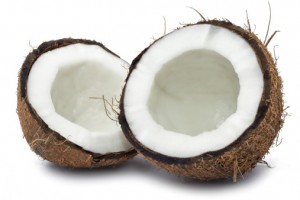Will Cardio or Weightlifting Burn More Fat?
The common theory about weight loss is that you need to get at least 150 minutes of moderate-intensity cardiovascular exercise per week, which boils down to roughly 30 minutes per day, five days per week. The American College of Sports Medicine released the aforementioned figure as a guideline for sustaining a healthy lifestyle, but there are conflicting reports on which mode of exercise is most effective for weight loss -- cardio or weight training. So which one will help you lose more weight?
Assess Your Goals
It's important to realize that people react differently to various types of exercise. For example, a 200-pound adult will burn approximately 455 calories over the course of a 60-minute weight-lifting routine, while a 160-pound adult will burn roughly 365 calories if they spend the same amount of time performing low-impact aerobic exercise, such as brisk walking. Therefore, the type of exercise you perform in relation to your body type and overall mass has a big impact on how many calories you burn. You need to establish concrete goals for ridding yourself of body fat. Working out five times per week is not a goal, it's a habit. Figure out how much weight you want to lose before engaging in a rigorous exercise program.
Cardio vs. Weightlifting
Cardio will help you burn more calories than weightlifting during bouts of moderate- to high-intensity training, but the impact of lifting weights is ultimately more beneficial for post-workout calorie burning. Weightlifting boosts your metabolic capacity, which enables you to naturally burn more calories at a faster rate. The "after-burn" effect will increase over time, potentially increasing your post-workout calorie burn to 36 hours. Performing a sufficient level of cardio will surely help contribute to your weight-loss goal, but the metabolic impact of lifting weights has the potential to fuel an increase in the total amount of calories you burn while at rest.
Metabolic Impact
The metabolic impact of lifting weights is dependent on several key factors. Some of these factors, such as the type of exercises you perform in the weight room, are controllable. According to research gathered by the Huffington Post, lower-body exercises, such as squats and deadlifts, contribute to greater post-workout calorie burn than standard bicep curls. It's also important to exert as much energy as possible. It's difficult to determine what an 85-percent exertion rate feels like, but chances are that you'll hit the mark if you constantly challenge yourself.
Bottom Line
Losing weight requires hard work. If you're incapable of maintaining an aggressive exercise mentality while also eating a healthy diet, it won't matter which mode of exercise you select as your primary focus. Both methods of exercise will help contribute to your weight loss. You need to burn 3,500 calories to lose 1 pound of body fat, which means you need to get a sufficient level of moderate- to high-intensity exercise and also eat right. You will not benefit from the after-burn effect of lifting weights if you consume unhealthy helpings of fatty foods. Cardio activities, including jogging, running and swimming, will ultimately help you burn more calories than lifting weights, but cardio won't automatically help you burn more fat. The body uses fat for fuel while at rest, which makes the after-burn effect a key part of the weight-loss process.

John Shea is a team sports fanatic and fitness aficionado. His work has been published across a wide platform of online audiences in the realm of health and fitness. His passion for fitness is exemplified in his writing, as he aims to help readers improve their overall well-being.
-
Detox And Get Healthy Fast - Is There A Step-By-Step Program Available To Detox And Get Healthy Fast?
There are many key elements that make up a healthy body, but for simpl
-
Pureed Navy Beans
Pureed Navy Beans are a great substitute for mashed potatoes in yo
-
How TVs Jillian Michaels Can Help You Lose Weight
If youve seen her transform contestants
-
Natural Health Tips on Weight Loss
Having an overweight body can make one a
-
2 Simple And Effective Weight Loss Techniques You Are Likely Not Using
If you want success in your weight loss efforts, you must be strategic
-
Cheat Your Way Thin
Cheat your way thin. The good old cheat
- DON'T MISS
- Weight Loss Success Achieved With Hcg
- Losing Weight is an Inside Job
- How I Learned To Love My Muffin Top
- 10 Seriously Easy Tips For Losing Weight By The End Of Summer
- Basal Metabolic Rate (BMR) Explained
- How Lifting Weights Helps You Burn Fat
- How To Find The Best Weight Loss Supplement For You
- Top Weight Loss Exercises to Burn Fat
- Weight Loss From Exercise
- Eating Habits That Can Undermine Your Weight-Loss Diet




